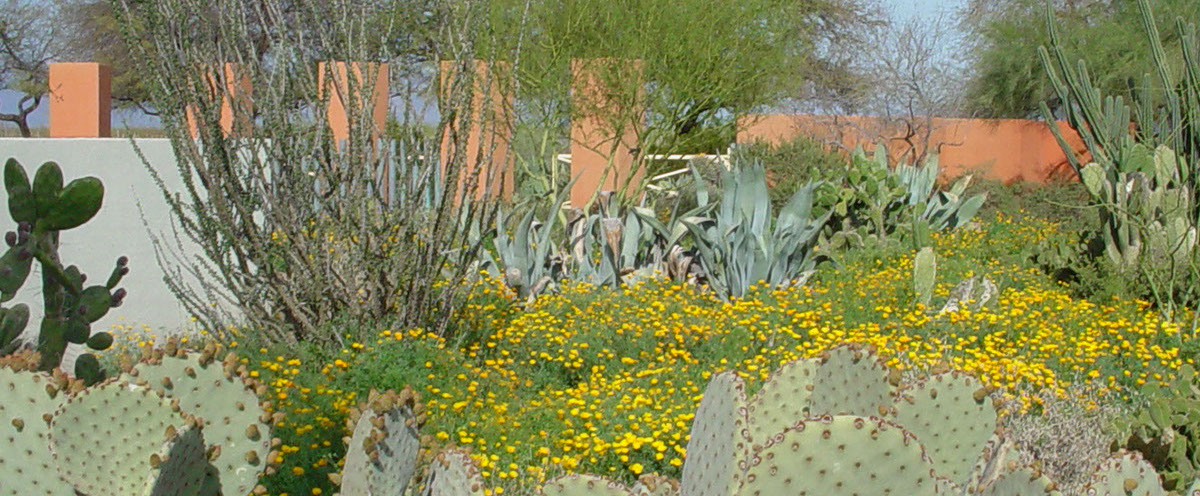
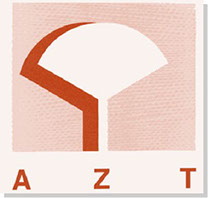

Olneya tesota 'AZT'
'AZT' Ironwood
Foliage: Evergreen to Semi-Deciduous
Mature Height: 15’ - 40’
Mature Width: 15’ - 40’
Growth Rate: Slow to Moderate
Hardiness: 20 degrees F
Exposure: Full Sun
Leaf Color: Gray-Green
Shade: Filtered
Flower Color: Purple
Flower Shape: Pea Shaped Petals
Flower Season: Late Spring to Summer
Thorns: Yes
Propagation Method: Cloning
Sizes Available: #25, #45, & 48"
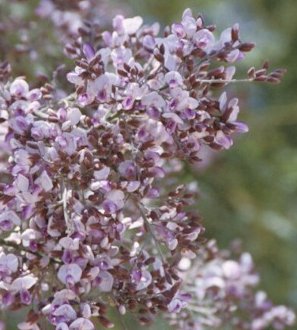
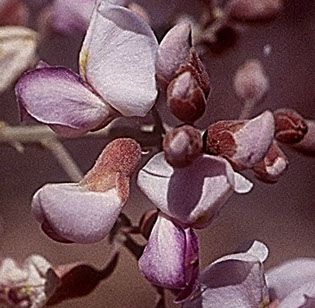
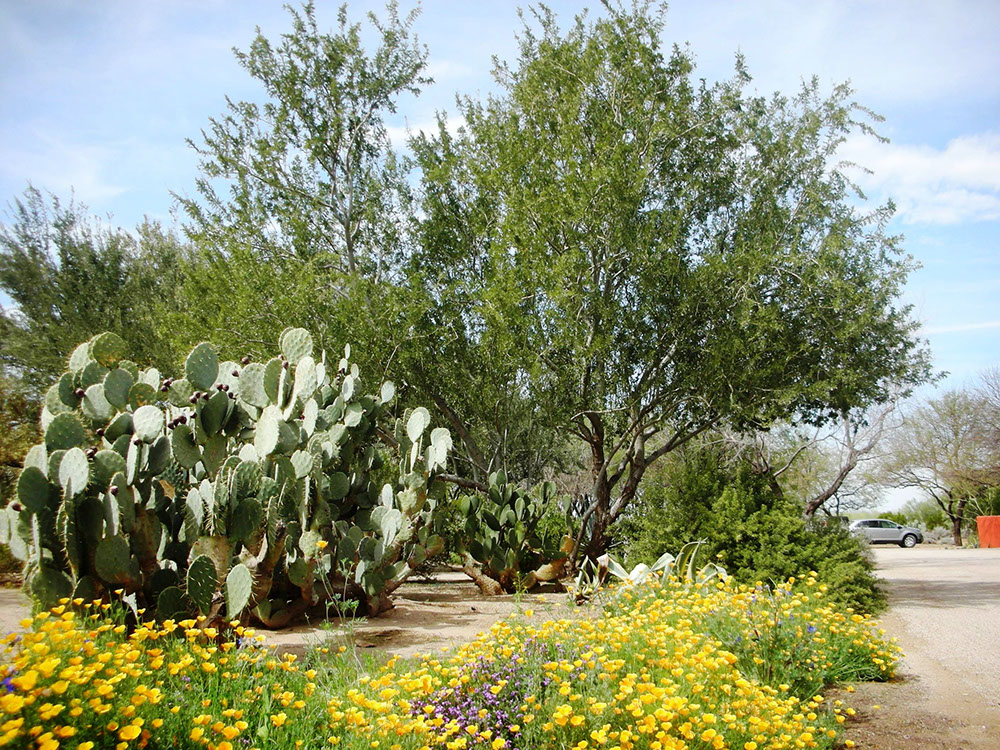
The characteristics that set Olneya tesota ‘AZT™’, ‘AZT™’ Desert Ironwood apart from seed selections are a faster growth rate, v-shaped, upright form and larger leaflets. This selection retains the graceful, chalk-gray trunks and branching that has made Desert Ironwood an iconic desert landscape tree. Olneya tesota ‘AZT™’ has exhibited greater cold hardiness than native population of this species and have survived temperatures of 17 degrees F. in AZT’s Demonstration Garden.
Good things come to those who wait. It’s true that the Ironwood (Olneya tesota) is not the fastest growing species in the arid landscape pallet. Few trees better illustrate the unique combination of beauty and austerity that is the Sonoran desert. This tree is slow growing, has beautiful spring flowers, graceful, curved trunks and require special care and consideration when used in landscape setting.
Ironwoods take their name from the dense, dark and heavy wood the tree produces. The wood is prized for carving and as firewood. It is native to the southwestern US and northwestern Mexico. In native settings it is typically found on rocky well-draining slopes and plains at elevations below 2500 feet. Foliage is gray green and semi-evergreen with leaves dropped in response to prolonged drought or freezing temperatures. Trees are hardy to 20 degrees but can sustain considerable foliage and small twig damage at 25 degrees. Immature trees can have fairly open canopies and generate limited amounts of shade. As trees mature, particularly in landscape settings, canopies become quite dense, generate ample shade and can limit growth and flowering of nearby understory plantings. As a rule, understory planting should be avoided as they can contribute to over-irrigation of Ironwoods. Mature trunks and branches are pale gray/white while immature wood is pale green and all branches are armed with many, sharp, curved thorns.
The natural growth habit of Ironwood is multiple trunks with branches extending to the ground forming a dome shaped canopy. Natural forms are excellent in plantings that transition landscapes back to undisturbed desert or when used as a security planting. To create a more cultivated appearance trees will require selective, regular pruning when younger. On existing specimens, such pruning should be done gradually over time as trees are vulnerable to sun injury when heavily pruned. Nursery grown Ironwoods typically require little if any pruning as they have been regularly shaped during the growing process. Trees produce clusters of small pink to purple flowers from April to June. Mature trees can grow to 30' by 40' but typically are 15' to 20' tall and as wide.
Ironwoods are extremely well adapted to the hottest environments in the Sonoran desert. Sparing supplemental irrigations are essential for establishing transplanted Ironwoods in the landscape. Once established, irrigation schedules need to be carefully monitored in order to promote root development and growth while avoiding under or overwatering. Trees will not thrive in lawns or in heavy soils when mixed with understory landscape plantings that require regular winter irrigation or frequent summer irrigation. Like Palo Verdes no single factor contributes to the death of Ironwoods more than does over irrigation. When placing Ironwoods in established landscapes be mindful of casual water sources (rainfall, irrigation overspray, drainage from pedestrian areas) as these can unknowingly contribute to over irrigation that can prove fatal. In the landscape, Ironwoods are commonly used as a focal point specimen, at entry areas, in small groupings (to amplify spring flower displays) and to integrate landscaped areas back to the native desert.
Variety 'AZT':
Arid Zone Trees makes selections from thousands of trees propagated from seed. Only Individual trees having the most desirable physical qualities (branching habits, leaf color, leaf canopy, and flower color) and sound horticultural characteristics (rooting, cold hardiness and growth rate) are selected for further study. These trees are then cloned (vegetatively propagated) and planted at our nursery for evaluation. Only the best of these trees are then placed in cloning production and are designated Variety 'AZT'. Since no one single selection of any desert tree specie is best adapted to all landscape applications, we continually search for new additions to our Variety 'AZT'.
Olneya tesota 'AZT' is propagated and available exclusively from Arid Zone Trees.
Cultural Practices:
Foster the development of a more dispersed root system and reduce the risk of wind throw by arranging irrigation emitters at varying distances from the trunk to encourage roots to "seek out" water and nutrients. Irrigation emitter arrangement along with other information on irrigations practices for desert trees can be found at Irrigation Practices for Desert Trees.
Prune as needed to reinforce the structure and form of the tree. Periodic thinning is the most desirable method of pruning. Avoid hedging or heading back desert species, as this will only stimulate excessive branching. Do not remove more than 20% of the canopy during the summer as this can lead to sunburn injuries that can later be invaded by wood boring insects. Always use clean, sharp tools that are cleaned regularly in a 10% solution of bleach. For detail pruning guide see Pruning Desert Trees.
Periodically insect pests can be a problem on some desert trees. On young trees, insect infestation can slow typical seasonal growth. Inspect trees during the growing season for common garden sucking insects such as aphids, thrip, whiteflies or psyllids. During dry months, (May and June) in dusty conditions, spider mites can appear. Monitor for infestation and apply controls as needed. Spray applications of water or water and Safer Soap give short-term control (3 to 7 days) for small insect population. For heavy infestation or longer control use federally registered insecticides. A contact insecticide application will kill existing adults. An application with a systemic soil drench will provide 8 to 12 weeks control for any post application insect hatchings or migration of insects. Before using pesticide for the first time or on new plants or cultivar, treat a few plants and check for phytotoxicty. Always read label and follow label instruction before using pesticides. For pesticide control recommendations contact a licensed pest control advisor.
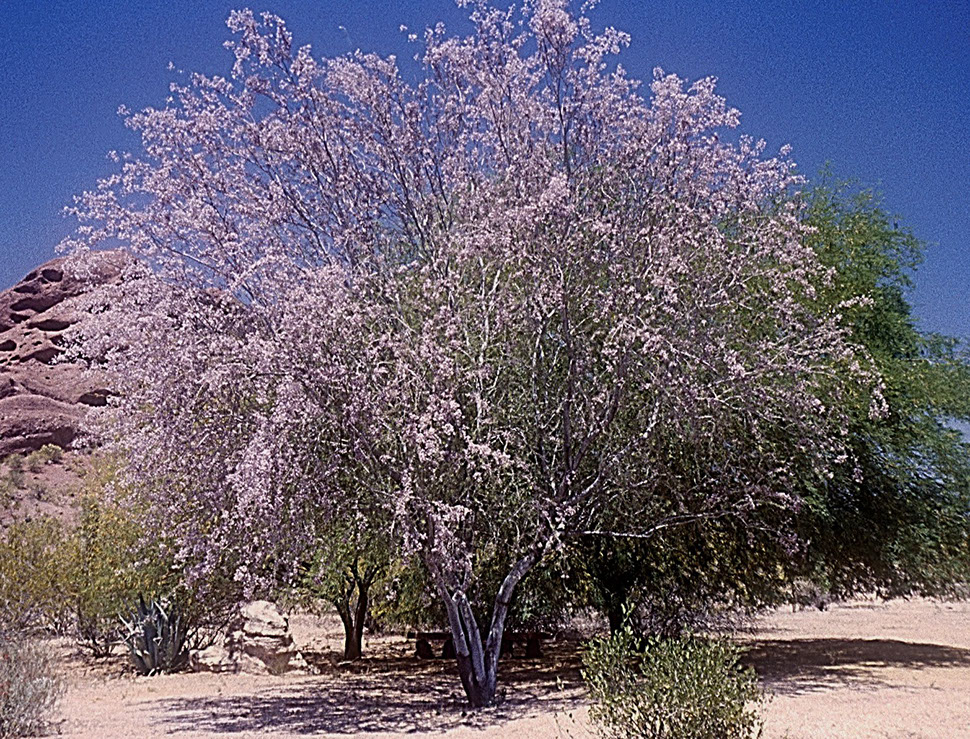

© Copyright 2000-2020 Arid Zone Trees